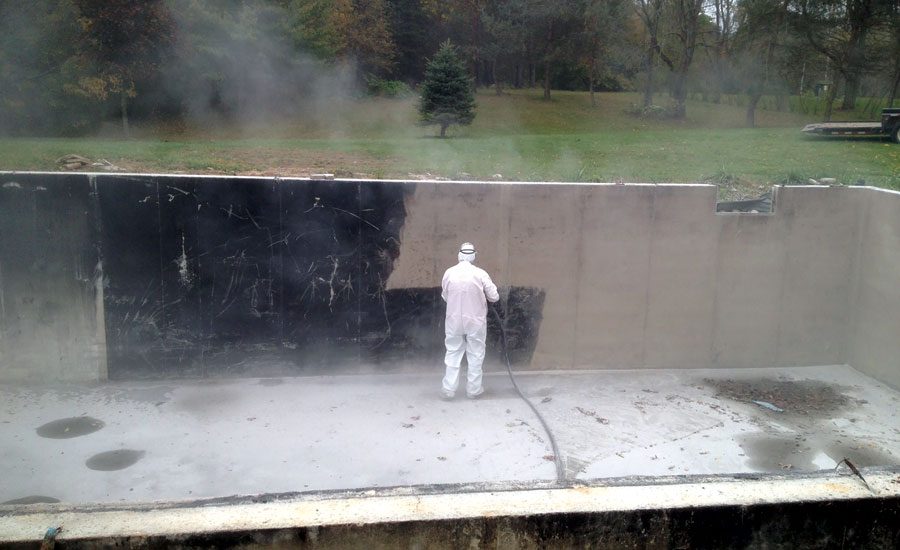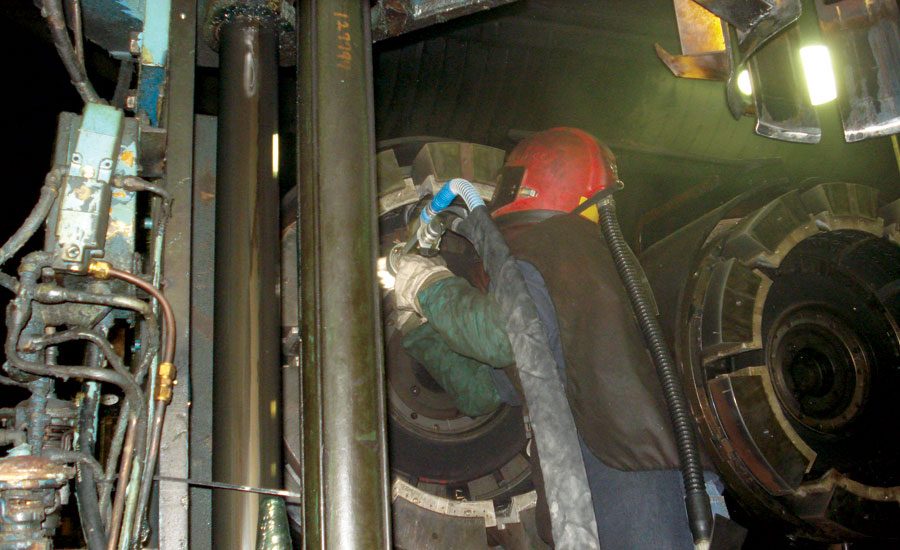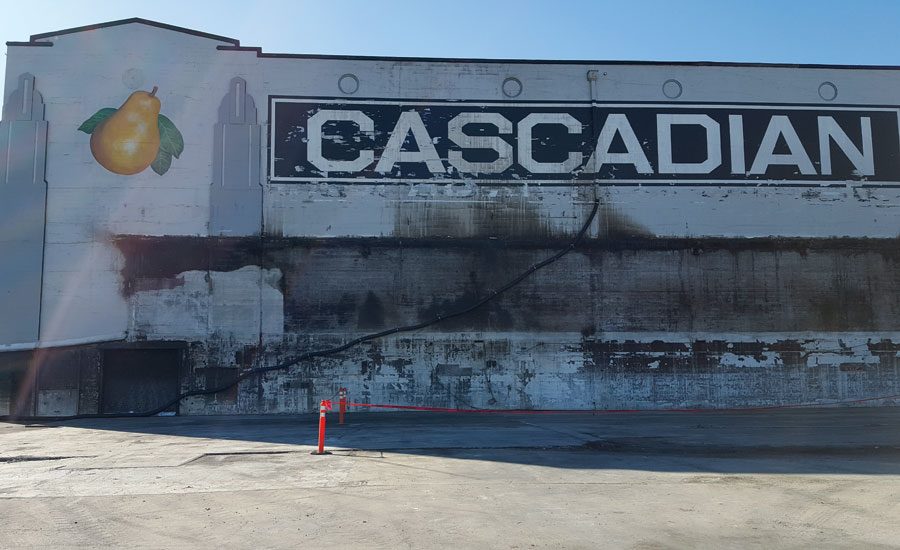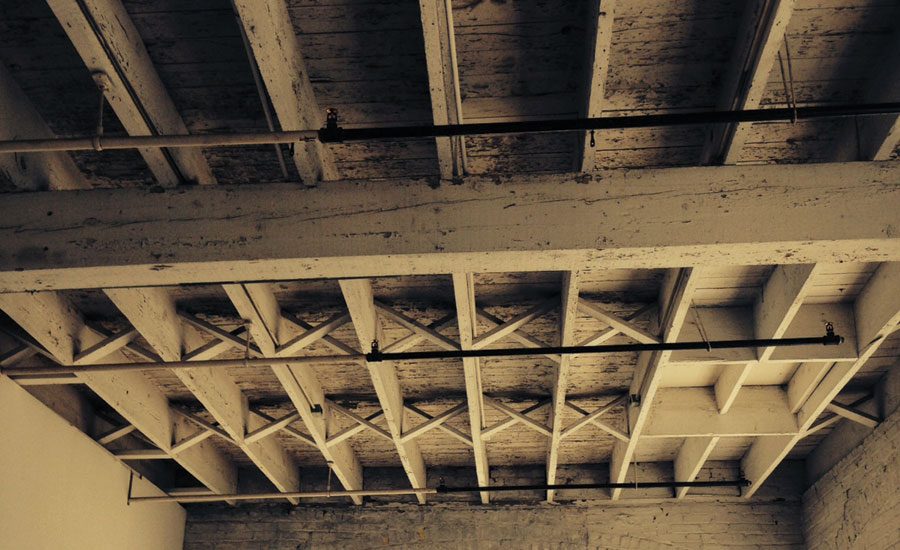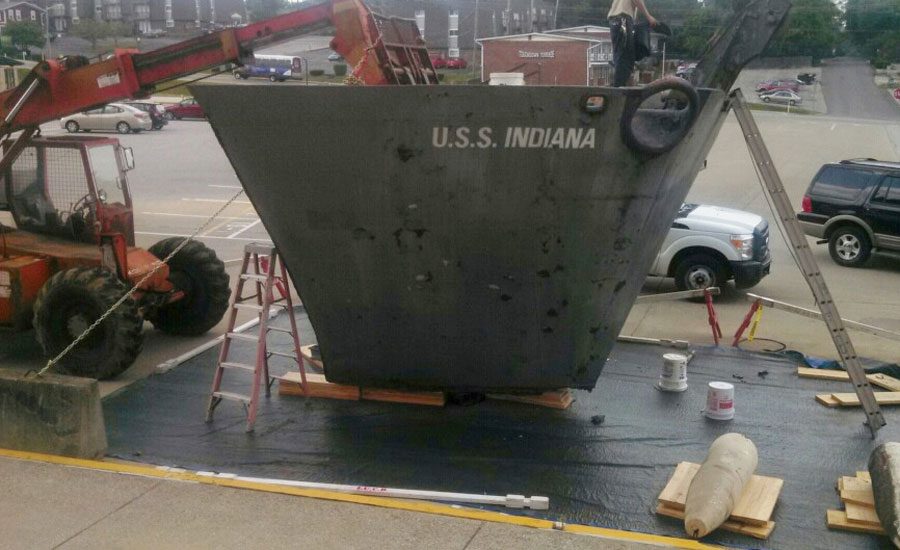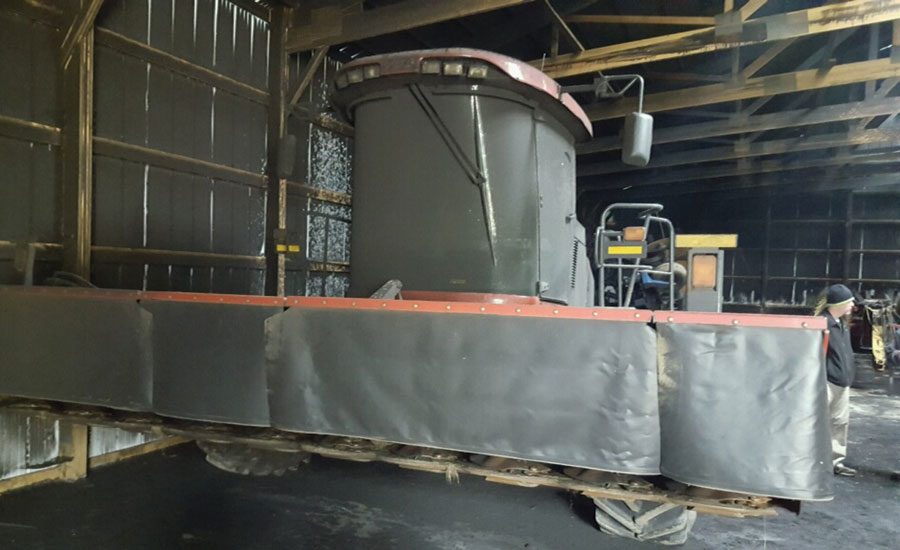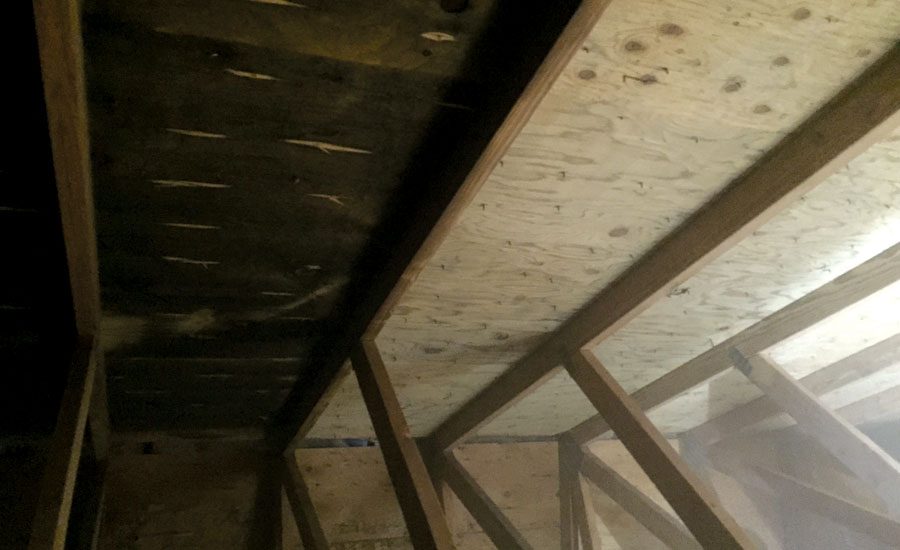What would you do?” asked the voice on the phone. I get this question almost every day of my working life, from every corner of the U.S., from contractors, engineers, architects, plant managers, insurance professionals, technicians, you name it – they all want to know what I’d do in their position. To be more accurate, they really want to know what others have done in the same, or a similar, situation. As fate should have it, I’m probably a pretty good person to ask. It’s not that I’m all that high-and-mighty, or all-knowing, or even just a good guesser.
The reality is that I visit at least three to five unique abrasive blasting sites every week – sometimes more - and I’ve done this for over two decades. I learned early on to listen to what the customer says, keeping my eyes open, and use the experience to expand my lexicon of blasting information. Sometimes it’s a manufacturing plant (See photo number 1) where blasting can be a daily job, integral to the quality of the goods being produced. Sometimes it’s a building, or re-construction site (See photo number 2) where the structure is sound, but is in dire need of blasting as a re-finishing tool in order to face a new future.
When you do the math, I’ve visited thousands of unique jobsites over the past 21 years. This depth of experience, and the perspective it gives, does allow me to effectively answer the question – when it relates to abrasive blasting – what would you do?
Lately, the phone has been especially active. It seems that OSHA – the Occupational Safety and Health Administration arm of the federal government – announced on March 24th of this year that it would publish a new standard for exposure to crystalline silica. This new standard is strict, set to cut the current permissible exposure limits in half. Crystalline silica (not to be confused with fused silica – i.e. glass) is typically referred to as “sand” - as in “sand” blasting. Occupational exposure to silica dust has long been known to produce silicosis, a disabling, nonreversible, incurable lung disease that commonly results in respiratory failure, and ultimately, death. Traditionally, blasting with silica sand has been identified as a likely source of exposure. Accordingly, the use of “sand” blasting has declined over the years, but it hasn’t disappeared altogether. Now, with OSHA’s new standard looming, those that are still relying on the old standby are scrambling to find alternatives that meet these new limits. I’ve heard from some that their sources for sand are going away. No surprise – if you sell silica to a blaster, the liability for the harm it can cause is just too much risk for the reward. Bottom line is that sand blasting is breathing it’s last ragged breath in the U.S.A.
So if we can’t sand blast it, what do we do? I’ve always instructed customers, both existing and newbies, that we don’t do sand blasting – never have and never will. We offer media blasting solutions to our customers. Of course, media refers to the more general category of the grit that we use when blasting. Over the last few years, certain media have grown in popularity due in large part to the restricted use of silica sand. Media like garnet, walnut shell, crushed glass, and slag products have become the popular replacements for sand because they contain less than 1% free (non-fused) silica. The real problem that most experienced sand blasters have is that sand is so incredibly cheap, and it works. Some industries (i.e. shipyards, and marine applications) have relied heavily on abrasive blasting with sand with great success. If only it weren’t for that pesky health issue… but there is that issue. The problem, according to sand proponents, is that the sand replacements are, unlike sand, not dirt cheap. The fact is, most blasting media are more expensive than sand, some twice as much, but some as much as ten times more, or higher. Therefore, it is of utmost importance to use the right alternative media to avoid even higher costs relative to sand. When an experienced sand blaster wants to switch from sand to a more sensible medium, knowledge is very important. Understanding which blasting grit to use on which application is probably the most important factor to consider. Use the right medium and the job is done faster, most often faster than with sand, due to the freedom to choose the medium based on performance, rather than just a low price. This improved efficiency is only possible with the knowledge and understanding of the various media available for the many different applications.
With some applications the use of an alternative blast media is obvious. Sand blasting has always had a reputation as being harsh, aggressive, or too damaging for many surfaces.
“I’ve got to remove blue paint from a log cabin. What would you do?”, asked a recent caller, a North Carolina contractor. (See photo number 3) Knowing that hard, angular abrasives are destructive to wood, we would naturally steer clear of those. In this case, the natural choice was walnut shell, with a “blocky” structure (think not sharp or jagged), and a hardness similar to the underlying logs. It was aggressive enough to remove the paint quickly, while leaving the wood in prime condition. Walnut shell is generally classified as an “agricultural” media, similar in character to pecan shell, almond shell, and corn cob media. Other applications involving wood, or other soft materials (i.e. historical brick and mortar) will also benefit from the relative softness of these media.
Another recent example comes to mind where a contractor was tasked to remove a coating painted over a dark, moldy, dirty wood, and brick building interior. (See photo number 4) The use of soft agricultural media was the natural choice – cost effective, non-destructive, and – most importantly – non-damaging to the operators.
Other applications require a little more consideration, and depth of understanding. “I’ve got to sand blast the bow section of a historical navy vessel… and we’re not even allowed to use sand. What would you do?” the contractor from Southern Indiana pleaded. (See photo number 5) And there were several obvious choices: coal or copper slag, garnet, crushed glass, and a few others. His real question, it turns out, was not so much about whether these media could do the job, but about which would do the job at the lowest cost. When considering this application, the main focus is on fast stripping of layers of paint from a very robust substrate – thick steel plate. This is where an understanding of the available media, and their characteristics is critical.
Three main characteristics of the media particles are the most important to consider: the shape of the particle, the friability of the material, and the bulk density relative to other media. The shape of the particle, and how it reacts with the coating, is fairly easy to understand. Microscopically, sand particles appear to have sharp, “knife-like” edges that scratch away the paint and corrosion from steel with ease. Sharp media cut faster. Friability, or the ease at which a particle will fracture, and break-down on impact, is the next important consideration. When blasting hard, robust substrates such as steel, fracturing of the media is not a positive feature. Fractured media creates dust, and will not be as effective when recycled through the blast system. Also, when blasting, this “fracturing” is actually dissipating the particles’ energy on impact – instead of transferring that energy onto the surface. Friable media cut slower. Non-friable media lends itself to recycling better: for multiple uses, and cost reduction – an opportunity not seen with sand.
Lastly, when considering a media choice, we’ll look at the bulk density – or how much it weighs for a given volume. The easiest way to understand bulk density, and its impact on surface finishing, has everything to do with the energy of momentum. A particle in motion – blasted from a nozzle – tends to stay in motion. Think of a moving freight train. It takes a lot of energy through the application of friction via the brakes to stop even an empty train. Doesn’t it take even more energy, or braking, to stop a loaded train? In this same way, two equally sized particles moving at the same velocity – one lighter, one heavier – will hit the surface with very different energy levels, or impact on the surface. In the case of the ship’s bow we recommended synthetic olivine, an oxide of magnesium, due to its angular shape, resistance to fracturing, and a very heavy bulk density – with great success.
Fire losses are some of the most challenging applications to match a blasting media to the needs of the job. Fires will damage, but not destroy a wide variety of building materials that range from burnt concrete, to soot damaged timbers, to metal siding, and many more – including the building’s contents. (See photo #6)
When a Wisconsin contractor asked me recently about what I would do, my answer came easy, “baking soda is the best for fires”. Unlike sand, and many other hard abrasives, the sharp crystalline structure of baking soda is extremely friable. While this makes recycling of baking soda almost impossible, the non-destructive nature of the media (most of the blast energy is dissipated at the surface, and not absorbed by the substrate) allows the soda to be use on most surfaces with little, or no, damage. Also, nozzles and equipment can be optimized (i.e. fan nozzles for wide spray patterns, lighter hoses for faster production, better ergonomics, etc…) for production because of this non-destructive nature. And unlike the problematic dust from other friable blast media, baking soda dust has the benefit that it is a buffering agent. When baking soda dust contacts highly alkaline (or highly acidic) substances such as soot, it neutralizes (changes the pH nearer to 7) the odor of the substance as it abrasively cleans. (See photo #7)
When you’re confronted by the question of “what would you do?” don’t worry. Someone’s probably been down this road before. Seek advice from your supplier of abrasives for alternatives to sand blasting media. With a little consideration of the soils or coatings, the substrate, and the interaction of the media it’s very likely that you’ll find a media that is superior, in many ways, to that old standby – sand.
